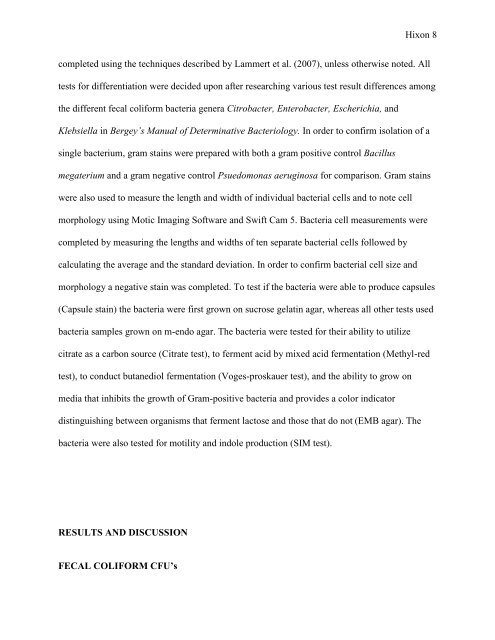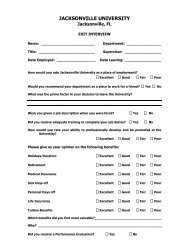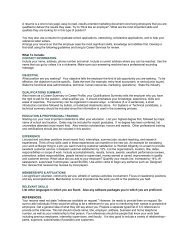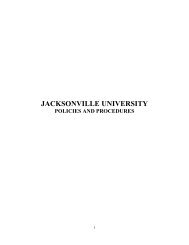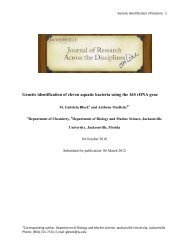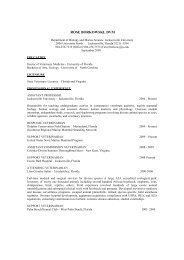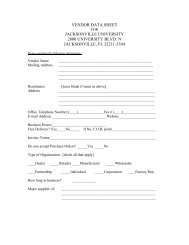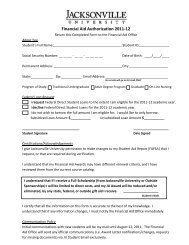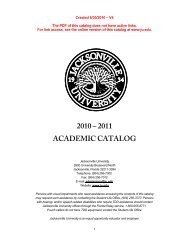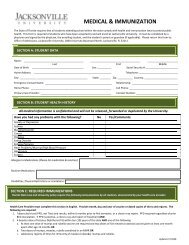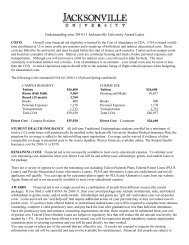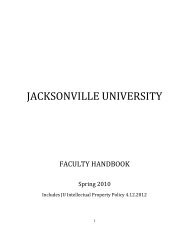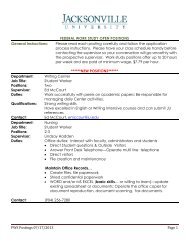Hixon 1 Concentrations and identities of fecal coliform bacteria from ...
Hixon 1 Concentrations and identities of fecal coliform bacteria from ...
Hixon 1 Concentrations and identities of fecal coliform bacteria from ...
Create successful ePaper yourself
Turn your PDF publications into a flip-book with our unique Google optimized e-Paper software.
<strong>Hixon</strong> 8<br />
completed using the techniques described by Lammert et al. (2007), unless otherwise noted. All<br />
tests for differentiation were decided upon after researching various test result differences among<br />
the different <strong>fecal</strong> <strong>coliform</strong> <strong>bacteria</strong> genera Citrobacter, Enterobacter, Escherichia, <strong>and</strong><br />
Klebsiella in Bergey’s Manual <strong>of</strong> Determinative Bacteriology. In order to confirm isolation <strong>of</strong> a<br />
single bacterium, gram stains were prepared with both a gram positive control Bacillus<br />
megaterium <strong>and</strong> a gram negative control Psuedomonas aeruginosa for comparison. Gram stains<br />
were also used to measure the length <strong>and</strong> width <strong>of</strong> individual <strong>bacteria</strong>l cells <strong>and</strong> to note cell<br />
morphology using Motic Imaging S<strong>of</strong>tware <strong>and</strong> Swift Cam 5. Bacteria cell measurements were<br />
completed by measuring the lengths <strong>and</strong> widths <strong>of</strong> ten separate <strong>bacteria</strong>l cells followed by<br />
calculating the average <strong>and</strong> the st<strong>and</strong>ard deviation. In order to confirm <strong>bacteria</strong>l cell size <strong>and</strong><br />
morphology a negative stain was completed. To test if the <strong>bacteria</strong> were able to produce capsules<br />
(Capsule stain) the <strong>bacteria</strong> were first grown on sucrose gelatin agar, whereas all other tests used<br />
<strong>bacteria</strong> samples grown on m-endo agar. The <strong>bacteria</strong> were tested for their ability to utilize<br />
citrate as a carbon source (Citrate test), to ferment acid by mixed acid fermentation (Methyl-red<br />
test), to conduct butanediol fermentation (Voges-proskauer test), <strong>and</strong> the ability to grow on<br />
media that inhibits the growth <strong>of</strong> Gram-positive <strong>bacteria</strong> <strong>and</strong> provides a color indicator<br />
distinguishing between organisms that ferment lactose <strong>and</strong> those that do not (EMB agar). The<br />
<strong>bacteria</strong> were also tested for motility <strong>and</strong> indole production (SIM test).<br />
RESULTS AND DISCUSSION<br />
FECAL COLIFORM CFU’s


